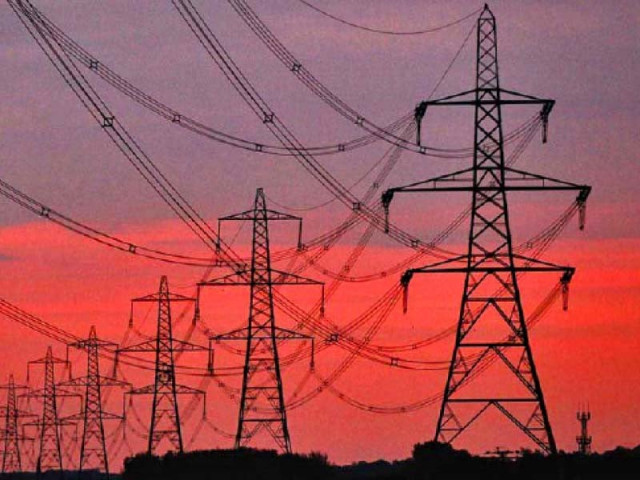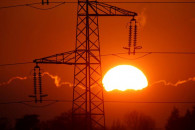More power import from Iran likely
Earlier plan to buy additional 100MW from neighbour hit a snag due to US sanctions

Pakistan has decided to increase import of electricity to 70MW from Iran to meet the needs of Gwadar even though an earlier plan to import additional electricity hit a snag due to US sanctions. Pakistan and China are developing Gwadar Port under the China-Pakistan Economic Corridor (CPEC) and the latter is also setting up a 300MW coalfired power plant. Pakistan decided to import 70MW additional power from Iran to meet the immediate needs of Gwadar in case the coal-fired power plants suffered a delay in commissioning.
The plan to import additional 100MW power from Iran had hit a snag due to US sanctions. The government has currently been importing up to 75MW electricity from Iran. However, it has not been able to make proper payment due to the sanctions imposed against Tehran. Pakistan had also been importing crude oil from Iran to meet the requirement of the country’s refineries. However, the oil supply had come to a halt in 2010 after US tightened sanctions against Iran. The same case was with electricity import.
Pakistan has been facing a tough situation to make regular payments to Iran since 2011 due to US sanctions against Tehran. However, Pakistan continues to import electricity from Iran despite sanctions and had been paying the electricity bill through some alternate sources like barter arrangement. But the country was not able to import the additional 100MW electricity despite both sides signing an agreement in 2009.
Pakistan had approved PC-1 for import of 100MW at Gwadar through 220 kV double circuit (D/C) T/Line from Polan (in Iran) in September 19, 2007 by the Executive Committee of National Economic Council (Ecnec). The contract agreement was signed between National Transmission & Despatch Company (NTDC) and SUNIR on February 4, 2009 for import of 100MW power. However, a senior government official said that it could not proceed further due to international sanctions on Iran.
The Power Division briefed the Cabinet Committee on CPEC (CCoCPEC) about the case in a recent meeting. But the Power Division did not support the option of importing additional 100MW electricity from Iran through Polan-Gwadar. Following the power supply options to meet future additional load demand of Gwadar/ Makran regional grid, the CCoCPEC considered this option if the commissioning of Gwadar coal-fired power plant got delayed. The scope of work of the project at Pakistan’s end includes Gwadar -220kV G/Station with 2x160 MVA, 220/132 kV T/ Fs. Secondly, it also includes a 220 kV double circuit T/Line (approx 74km) from Pak-Iran border to Gwadar.
Tavanir and Sunir of Iran, the companies that signed the contract for power supply, offered to finance the construction of the line against Tavanir’s payables by the Central Power Purchasing Agency (Guarantee) Limited (CPPA-G). The cabinet body on CPEC reviewed all options and held a threadbare discussion thereon. The finance minister observed that provisions of utilities were the prerequisite for the establishment of CPEC projects in Gwadar.
It stressed on addressing the issue on a priority basis to ensure investment in the area. It also discussed that there is a need for an interim as well as permanent solution for power supply to Gwadar, which is prerequisite for its growth. The project will be completed by March 2023. It will resolve the issue in the longer term. In the meantime, the best alternative is to import electricity from Iran to meet urgent needs.
The CCoCPEC considered options for power supply to Gwadar and directed additional power of 70MW may be imported from Iran. It directed the Quetta Electric Supply Company (Qesco) to finalise its procurement for laying transmission line to supply power to Gwadar and complete the project by March 2023.
Other options
The cabinet body on CPEC also considered other options to meet future additional load demand of Gwadar/Makran region grid. It considered an interim supply Arrangement before induction of 300MW Gwadar coal-based power plant. Before induction of 300MW coal-fired power project and after the 132kV interlinking of Makran/Gwadar regional grid with national grid, additional load demand of Makran/Gwadar grid will be in the range of 105MW to 120MW, in addition to the existing 100MW that may be met through the following interim arrangements.
The cabinet body also considered different options to make interim arrangements, which requires an investment of around $475 million. Firstly, it considered to increase power import from 100MW to 125MW (25MW increase) from Iran through the existing 132 kV link, which requires negotiation with Iranian counterparts. The 25MW augmentation may be met with installation of 150/- 50 MVAR SVC at Gwadar. In case of a delay in the commissioning of the said SVC, a 48 MVAR capacitor would be required at the Gwadar old substation.
However, the Power Division did not back this option. Secondly, it considered the option of isolation of some part of the Makran grid - feeding 132 kV grid stations of Panjgur, Hoshab and Turbat through the national grid. The Power Division endorsed this option. Shifting of load demand This arrangement would result in shifting of the following load demand of Makran grid to the national grid. There will be 95MW augmentation with installation of 150/-50 MVAR SVC at Panjgur.
The Power Division also recommended this option. There will be an addition of third 220/132 kV auto-transformer at 220 kV grid station of Khuzdar before March 2023. The power supply option to meet load demand of regional grid through 220 KV DaduMakran/Gwadar Transmission Line was also proposed.



















COMMENTS
Comments are moderated and generally will be posted if they are on-topic and not abusive.
For more information, please see our Comments FAQ